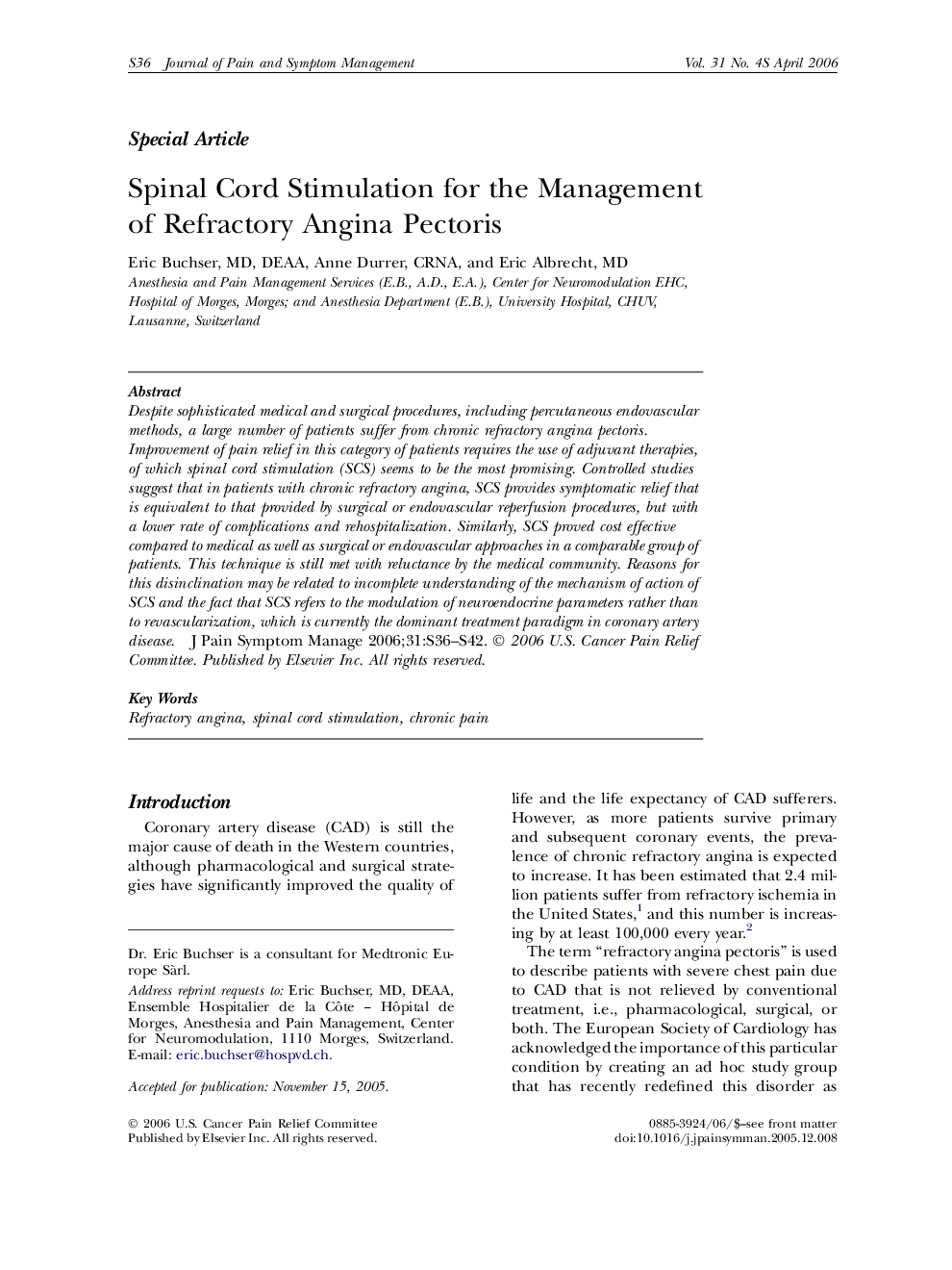| Article ID | Journal | Published Year | Pages | File Type |
|---|---|---|---|---|
| 2730280 | Journal of Pain and Symptom Management | 2006 | 7 Pages |
Despite sophisticated medical and surgical procedures, including percutaneous endovascular methods, a large number of patients suffer from chronic refractory angina pectoris. Improvement of pain relief in this category of patients requires the use of adjuvant therapies, of which spinal cord stimulation (SCS) seems to be the most promising. Controlled studies suggest that in patients with chronic refractory angina, SCS provides symptomatic relief that is equivalent to that provided by surgical or endovascular reperfusion procedures, but with a lower rate of complications and rehospitalization. Similarly, SCS proved cost effective compared to medical as well as surgical or endovascular approaches in a comparable group of patients. This technique is still met with reluctance by the medical community. Reasons for this disinclination may be related to incomplete understanding of the mechanism of action of SCS and the fact that SCS refers to the modulation of neuroendocrine parameters rather than to revascularization, which is currently the dominant treatment paradigm in coronary artery disease.
